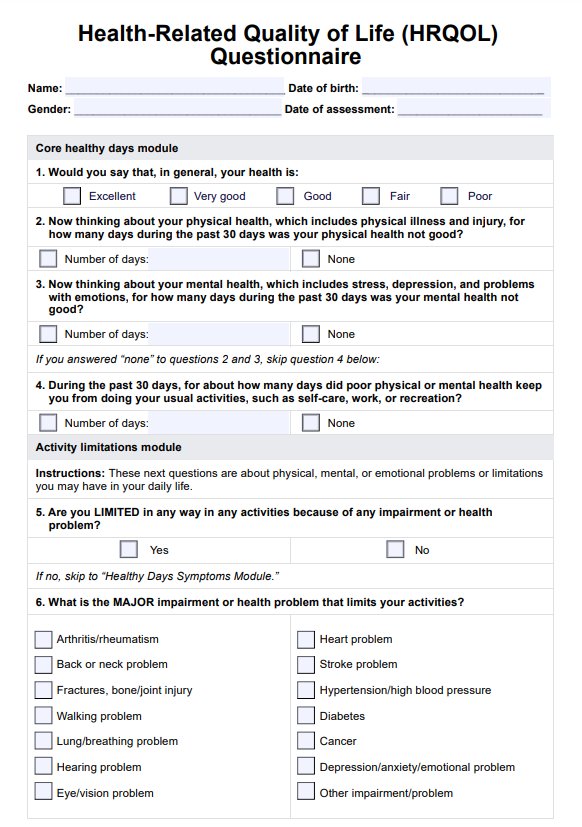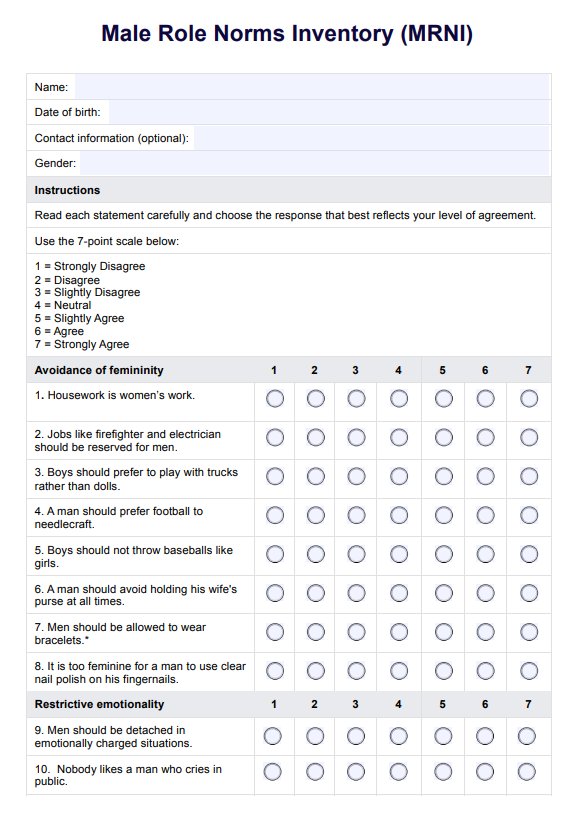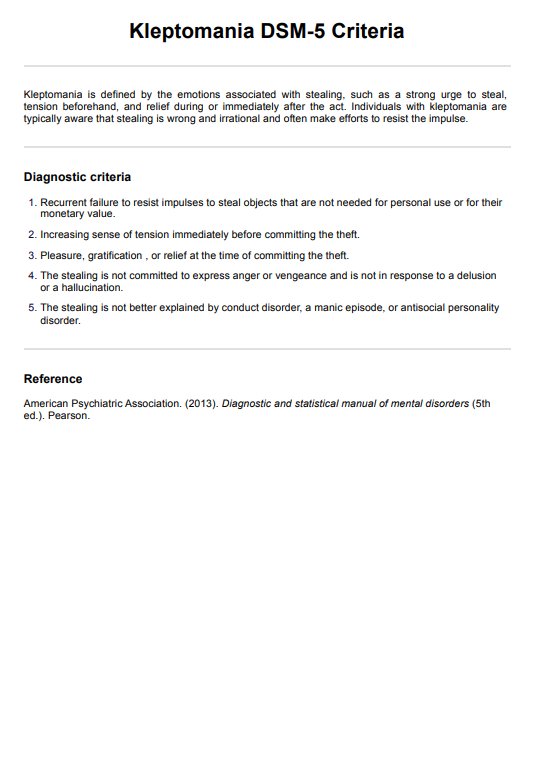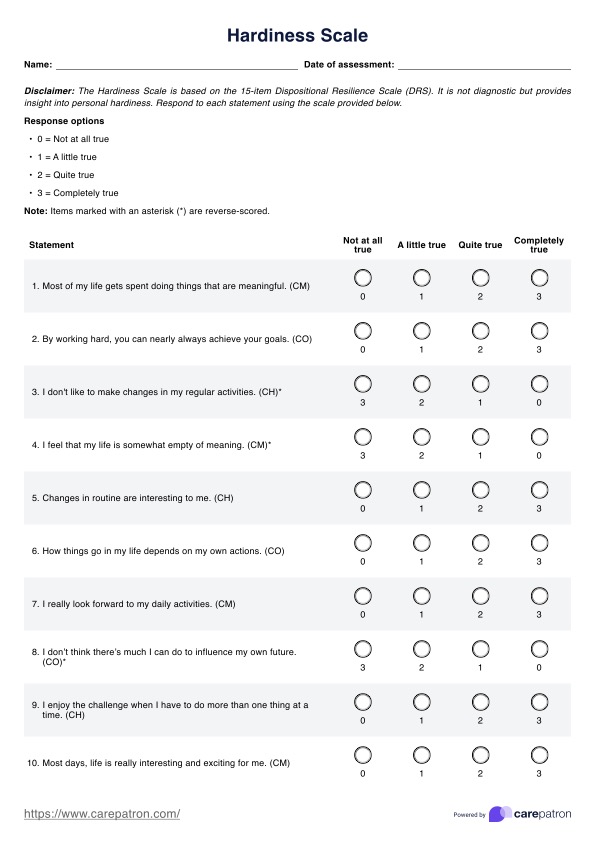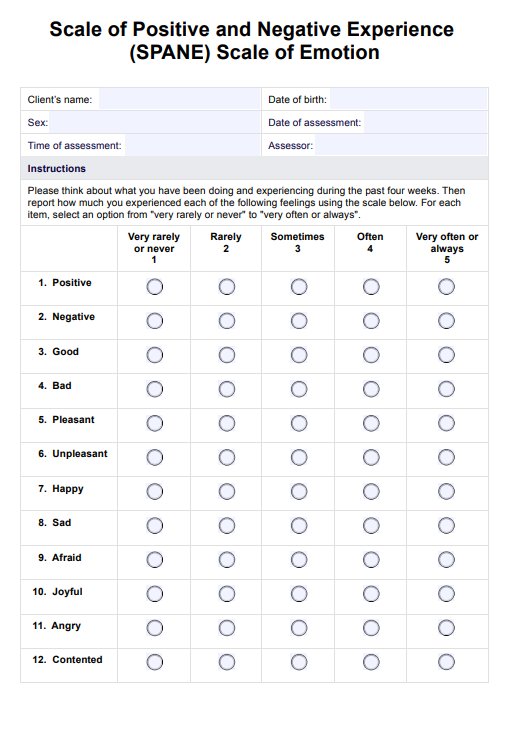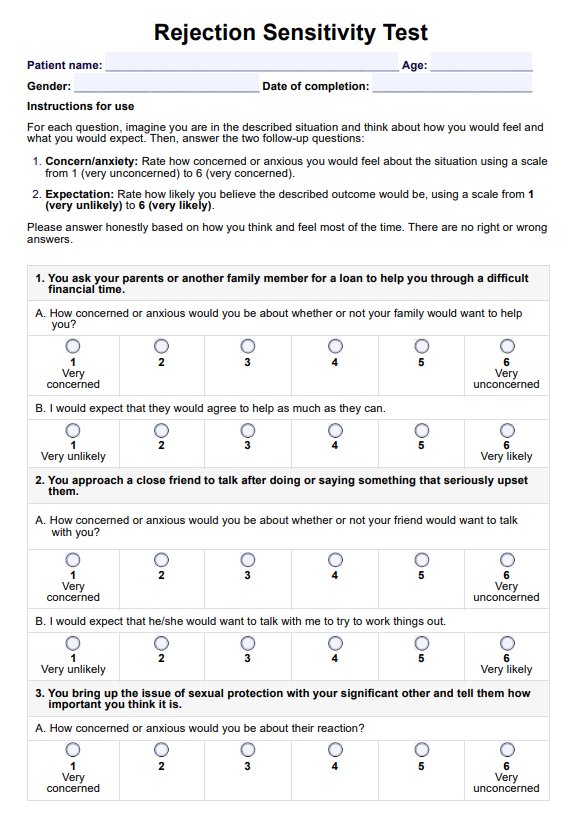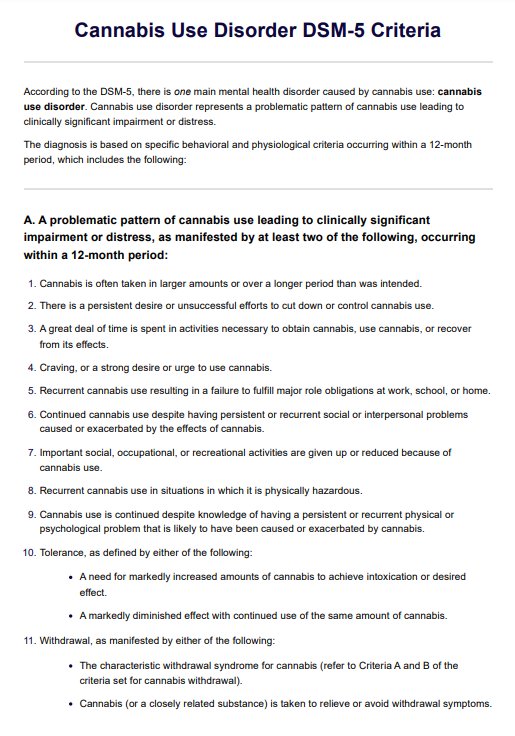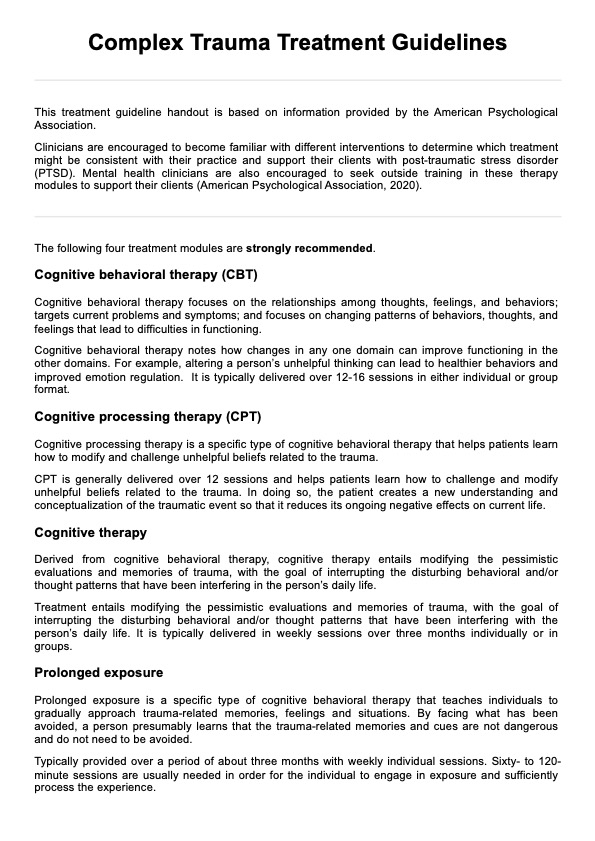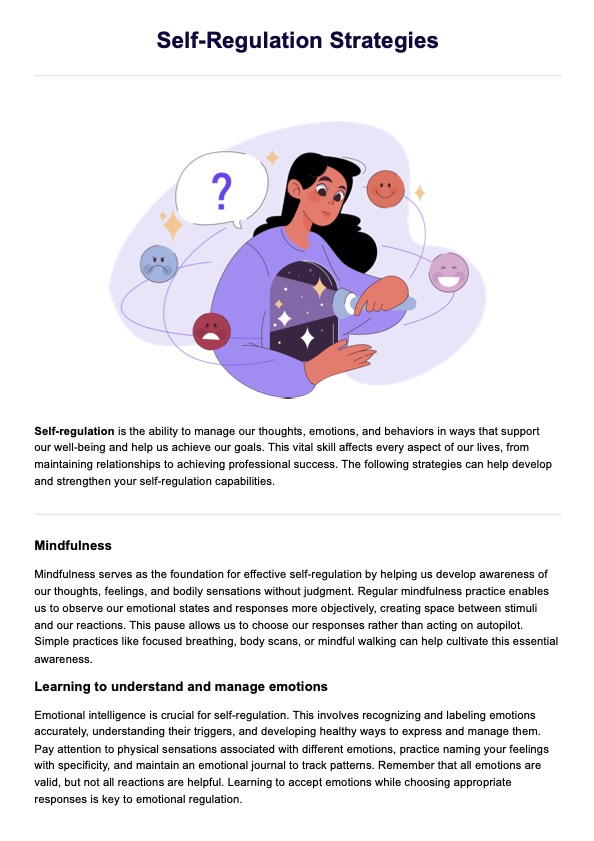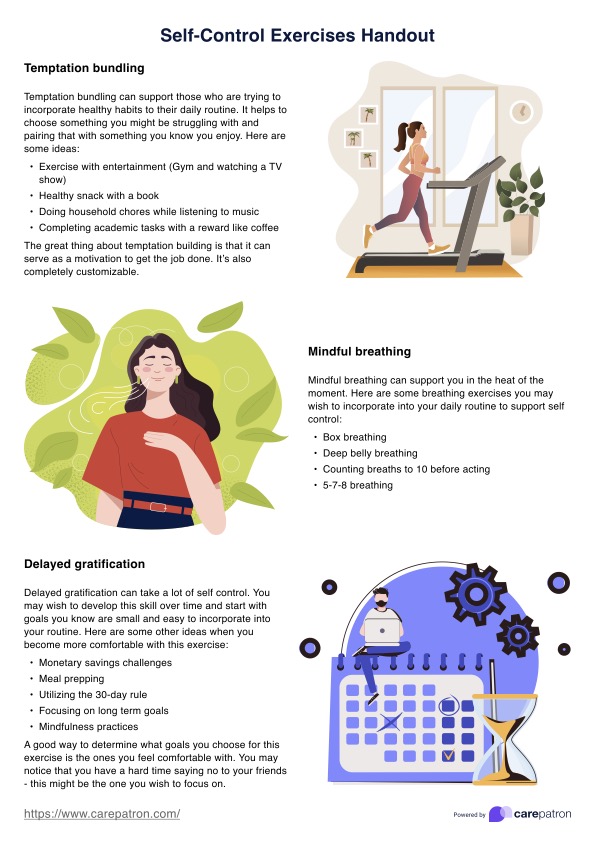Peer Pressure Worksheet
Empower individuals with our peer pressure worksheet guide – navigate social influence, foster resilience, and make informed decisions confidently.


What is peer pressure?
Peer pressure refers to the influence individuals within a social group exert on each other, encouraging conformity to group norms, values, and behaviors. This phenomenon is most commonly observed during adolescence, when individuals are particularly susceptible to the opinions and actions of their peers. The pressure can manifest in various forms, such as direct persuasion, subtle social cues used, or implicit expectations within a social context.
People often experience peer pressure in an attempt to fit in or gain acceptance within a particular group. This can lead individuals to adopt certain attitudes, beliefs, or behaviors, even if they may not align with their values or preferences. The fear of rejection or isolation can be a powerful motivator, driving individuals to conform and respond to the perceived expectations of their peers.
Positive peer pressure can also exist, where individuals are encouraged to engage in beneficial or constructive behaviors. However, negative peer pressure is more commonly discussed, as it can lead to risky or harmful behaviors in kids, such as substance abuse, delinquency, or other forms of misconduct.
Peer Pressure Worksheet Template
Peer Pressure Worksheet Example
The negative effects of peer pressure
Peer pressure can negatively affect individuals, especially during vulnerable stages like adolescence. One of the primary concerns is the potential for risky behavior adoption. Individuals may engage in activities such as substance abuse, smoking, or delinquency to conform to the perceived norms of their peer group or parents, even if these behaviors go against their values.
Another detrimental impact is the compromise of individual values and beliefs. Under peer pressure, individuals may abandon their principles to fit in or avoid rejection. This can lead to inner conflict, a loss of identity, and a diminished sense of self-worth as individuals distance themselves from their authentic selves.
Social exclusion and bullying are additional adverse outcomes of peer pressure. Those who resist conforming to group norms may face isolation, ridicule, or peer aggression. This exclusionary behavior can contribute to feelings of loneliness, depression, and anxiety.
Academic performance may also suffer, as individuals influenced by negative peer pressure may prioritize social acceptance over their educational responsibilities. Skipping classes, neglecting homework, or engaging in disruptive behaviors can be consequences of succumbing to peer pressure.
The difference between negative peer pressure and positive peer pressure
Peer pressure can have negative and positive effects, depending on the nature of the influence. The key distinction lies in whether the pressure encourages detrimental or beneficial behaviors to an individual's well-being. Here's a breakdown of the differences between negative peer pressure and positive peer pressure:
Negative peer pressure
- Risky behaviors: Negative peer pressure often involves encouraging or coercing individuals to engage in risky, harmful behaviors or go against their better judgment. Examples include substance abuse, delinquency, or engaging in unsafe activities.
- Conformity to unhealthy norms: Individuals may feel pressured to conform to group norms that promote negative behaviors, even if these actions conflict with their values or pose potential risks to their health and well-being.
- Social exclusion and bullying: Those who resist negative peer pressure may face social exclusion, ridicule, or bullying from their peers, contributing to adverse emotional and psychological effects.
Positive peer pressure
- Encouragement of healthy behaviors: Positive peer pressure involves influencing individuals to adopt constructive, beneficial behaviors that contribute to their well-being. This can include promoting a healthy lifestyle, academic excellence, or positive social engagement.
- Support for personal growth: Peers can positively influence each other by supporting individual goals, encouraging personal development, and fostering a positive self-image. This type of pressure helps individuals become the best version of themselves.
- Social cohesion and teamwork: Positive peer pressure often encourages collaboration and teamwork. Working together towards common goals can enhance interpersonal skills, build a sense of community, and contribute to positive social dynamics.
Understanding the distinction between negative and positive peer pressure is essential for individuals, particularly during adolescence when social influences are significant. Developing the ability to resist negative pressures and surround oneself with positive friends and influences is crucial for personal growth and well-being.
The impact of peer pressure on mental health and self-esteem
Peer pressure can have a profound impact on mental health and self-esteem, particularly during adolescence when individuals are forming their identities and seeking social acceptance. Here are some ways in which peer pressure can influence mental health and self-esteem in teens:
- Conformity and identity issues: The pressure to conform to peer expectations may lead individuals to compromise their values and beliefs, causing inner conflict and confusion about their true identity. This struggle can contribute to anxiety and stress.
- Social rejection and isolation: The fear of social rejection can be a powerful motivator for conforming to peer norms, even if those norms are not aligned with an individual's values. Resisting pressure may lead to feelings of isolation and loneliness.
- Self-esteem and approval seeking: Constantly seeking approval from peers and conforming to their expectations can negatively impact self-esteem. Individuals may develop a reliance on external validation, making them vulnerable to fluctuations in social acceptance.
- Mental health disorders: Negative peer pressure, especially when it involves engaging in risky behaviors, can contribute to mental health disorders such as anxiety, depression, and substance abuse.
- Bullying and victimization: Individuals who resist negative peer pressure may become targets for bullying or victimization, leading to emotional distress and further impacting mental health.
- Pressure to conform to unrealistic standards: In social groups where appearance is emphasized, peer pressure can contribute to body image issues as individuals feel compelled to do unrealistic beauty standards set by their peers.
- Coping mechanisms: Individuals under peer pressure may adopt unhealthy coping mechanisms, such as substance abuse or self-destructive behaviors, as a way to manage the stress associated with conformity.
Benefits of using this worksheet
A peer pressure worksheet can offer various benefits, especially in educational or counseling settings. Here are some advantages of utilizing such a tool:
- Increased self-awareness: Worksheets prompt individuals to reflect on their experiences with peer pressure, helping them become more self-aware of the dynamics at play and their responses.
- Understanding peer pressure: Worksheets can educate individuals about the different forms of peer pressure, both positive and negative, and help them recognize how it influences their thoughts and behaviors.
- Enhanced communication: Worksheets may include prompts for discussing peer pressure scenarios. This encourages individuals to articulate their thoughts and feelings, improving their communication skills.
- Developing decision-making skills: Worksheets often include scenarios that require individuals to consider different options and make decisions. This helps build critical thinking and decision-making skills.
- Setting personal goals: Worksheets can guide individuals in setting personal goals and values, empowering them to make choices aligned with their aspirations rather than succumbing to external pressures.
- Identifying coping strategies: Individuals can use worksheets to explore and identify healthy coping mechanisms for dealing with peer pressure fostering resilience and emotional well-being.
- Facilitating group discussions: In educational or group settings, peer pressure worksheets can initiate meaningful discussions, allowing participants to share experiences and insights.
- Preventing negative outcomes: Worksheets can be part of preventive programs, helping individuals recognize potential negative outcomes of peer pressure and equipping them with strategies to avoid harm.
- Encouraging peer support: Worksheets may encourage individuals to identify positive influences and support networks, fostering a sense of belonging and resilience against negative peer pressure.
- Understanding others: Peer pressure worksheets can encourage individuals to consider the perspectives and motivations of their peers, promoting empathy and a better understanding of group dynamics.
- Overall life skills: Engaging with peer pressure worksheets contributes to developing various life skills, including self-reflection, decision-making, communication, and interpersonal skills.
Commonly asked questions
A peer pressure worksheet is a structured document or activity designed to help individuals explore and understand the dynamics of peer pressure, often in educational or counseling settings.
Peer pressure worksheets can be incorporated into school curriculum activities or counseling sessions. They provide a framework for students to explore their experiences with peer influence, develop critical thinking skills, and enhance their ability to make informed decisions. These worksheets may also serve as a starting point and resource for classroom discussions on social dynamics.
Peer pressure worksheets cover various topics related to social influence, decision-making, and interpersonal skills.


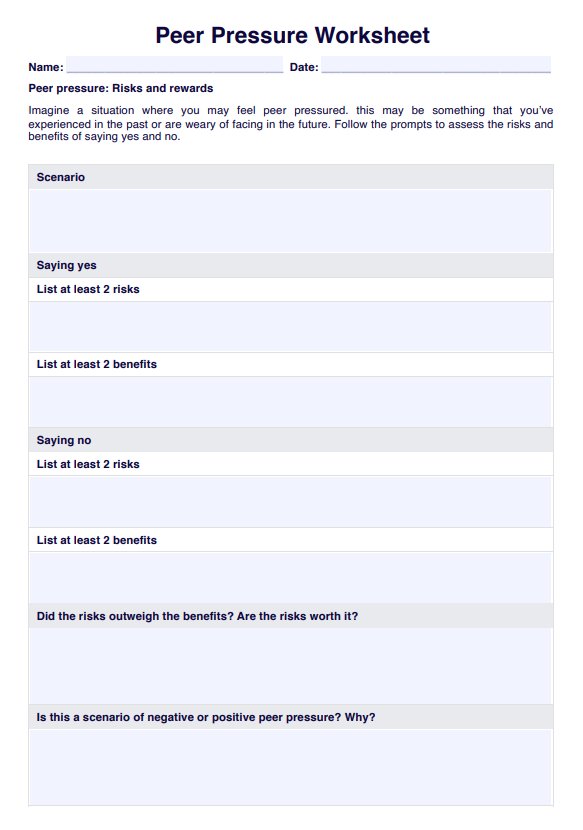

















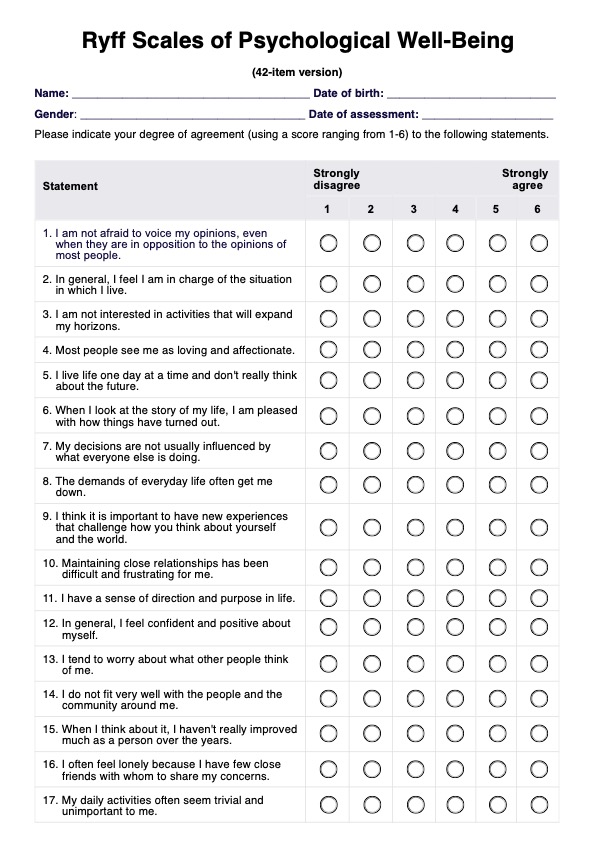
-template.jpg)




